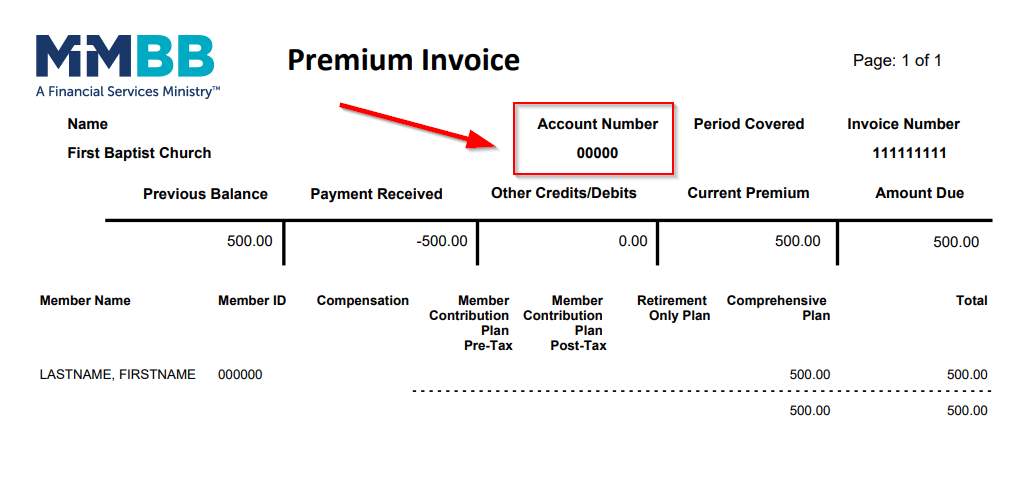The Markets (third quarter through September 30, 2024)
Wall Street got off to a good start to begin the third quarter of 2024 and continued to rally for much of the quarter. Investors spent the quarter watching inflation and economic data, trying to gauge whether the Federal Reserve might lower interest rates. Each month of the quarter provided solid evidence that inflationary pressures had been curbed. Both the personal consumption expenditures (PCE) price index and the Consumer Price Index (CPI) declined over the last three months, with the 12-month rate for the CPI ending the quarter at 2.5%, and the PCE price index closing the quarter at 2.2%. In response, the Federal Reserve cut the federal funds target rate range by 50.0 basis points, marking the first rate reduction since March 2020 in the midst of the COVID-19 pandemic. Several indexes reached new records throughout the quarter. The S&P 500 is off to its best nine-month start since 1997, while the Dow and the NASDAQ also hit new highs in the third quarter. Among the market sectors, only energy failed to close the quarter higher. The remaining 10 sectors recorded notable gains, led by utilities (19.1%), real estate (17.1%), industrials (12.6%), and materials (11.1%). Rising bond prices weighed on yields, with the yield on 10-year Treasuries closing lower in each month of the quarter. The yield on the 2-year note ended the quarter at 3.65%, a decrease of 84.0 basis points from the beginning of the quarter. Corporate earnings enjoyed a solid quarter, with 80.0% of S&P 500 companies reporting actual earnings per share (EPS) above the five-year average of 77.0%. The S&P 500 further reported growth in earnings of 11.3%, marking the highest year-over-year growth since the fourth quarter of 2021.
Gold rose nearly 14.0% in the third quarter and nearly 28.0% in 2024 as anticipated interest rate cuts by central banks supported trading precious metals. In addition, higher demand for gold by several Asian central banks, particularly the People's Bank of China, helped lift the price of gold, which reached a record high of $2,685.15 per ounce at the end of September. Crude oil prices fell about 16.0% in the third quarter as China's economic struggles, rising supplies, weak demand, and escalating tensions in the Middle East took their toll. The retail price for regular gasoline was $3.185 per gallon on September 23, $0.128 below the price a month earlier and $0.253 less than the price at the end of the second quarter. Regular retail gas prices decreased $0.652 from a year ago. The U.S. dollar ended the quarter down nearly 5.0%. Home mortgage rates averaged 6.2% as of September 12, about 0.57% percent lower than the July 18 rate and down from 7.18% a year ago.
July proved to be an interesting month in the stock market as tech stocks, which had been the bellwether of the market for much of the year, dipped lower, replaced by small- and mid-cap stocks. While the Federal Reserve did not change the Fed funds rate in July, there was plenty of rhetoric supporting a rate cut as early as September. Economic data and Inflation indicators offered further support to a reduction in interest rates. The CPI registered 3.0% for the 12 months ended in June, a 0.3 percentage point decrease from the May yearly estimate. The PCE price index increased by 2.5% for the year ended in June, down from the May figure of 2.6%. Job gains slowed to 145,000 in June (revised), below the 12-month average of 215,000. Investors seemed to make moves based on the anticipated rate cuts. Lower interest rates tend to support smaller stocks, which are generally leveraged by borrowed funds. As such, the small caps of the Russell 2000 led the benchmark indexes listed here, gaining 10.1%, which accounted for most of its year-to-date 11.2% gain. The Dow rose 4.4% and the S&P 500 inched up 1.1%. The NASDAQ dipped 0.8%. Interest-sensitive market sectors also benefited from the projected rate cuts, with real estate, utilities, and financials leading the way, while information technology and communication services closed the month lower. Anticipated rate cuts also had an impact on bonds. The inverted yield curve between the 2-year and 10-year spread flattened, with yields on 10-year Treasuries falling 24.0 basis points. The retail price for regular gasoline at the end of July was $3.484 per gallon, down $0.273 from July 2023.
In August, Wall Street got off to a sluggish start only to rebound by the end of the month. Each of the benchmark indexes listed here posted gains (with the exception of the Russell 2000). The Global Dow gained 2.6%, followed by the S&P 500, which rose 2.3%. The Dow advanced 1.8% and the NASDAQ ticked up 0.7%. The Russell 2000, which could not maintain its strong July performance, fell 1.6%. While tech shares rebounded somewhat, the market broadened in general. Real estate and consumer staples led the market sectors, while consumer discretionary and energy declined. The Federal Reserve did not meet in August. However, Fed Chair Jerome Powell clearly intimated that there was strong consideration to lowering interest rates in September. With inflation indicators continuing to show a disinflationary trend, the focus shifted to employment, where job gains in July slipped to 89,000 (revised), while the unemployment rate settled at 4.2%. Bond prices rose again, dragging yields down 20.0 basis points to 3.90%. However, despite favorable stock market returns and a stabilized inflation rate, concerns over the shrinking labor market, a slowdown in industrial production, and the switch of presidential candidates, prompted some skepticism among investors.
September, which is historically a poor month for stocks, bucked that trend, with each of the benchmark indexes listed here closing the month higher. The Fed's 50.0 basis-point interest rate cut, coupled with signs of resilience in the economy, helped raise investor confidence in the stock market. Each of the indexes listed here closed September higher, despite a slow start to the month. Consumer discretionary and utilities led the market sectors, which generally performed well in September, with the exception of health care, real estate, and energy, which lagged. Ten-year Treasury yields dipped lower. As aforementioned, the Fed cut interest rates by 50.0 basis points following the conclusion of its meeting on September 18. As a result, stocks moved generally higher, although several of the Fed officials tempered their comments concerning whether or when additional rate cuts may occur. Crude oil prices ended the month lower as weaker demand, coupled with rising surpluses, eclipsed concerns over escalating tensions in the Middle East. Gold prices advanced in September, enjoying several record highs along the way.
MARKET SUMMARY
| MARKET/INDEX |
2023 CLOSE |
As of
Sept. 30 |
MONTHLY CHANGE |
QUARTERLY CHANGE |
YTD CHANGE |
| DJIA |
37,689.54 |
42,330.15 |
1.85% |
8.21% |
12.31% |
| NASDAQ |
15,011.35 |
18,189.17 |
2.68% |
2.57% |
21.17% |
| S&P 500 |
4,769.83 |
5,762.48 |
2.02% |
5.53% |
20.81% |
| RUSSELL 2000 |
2,027.07 |
2,229.97 |
0.56% |
8.90% |
10.01% |
| GLOBAL DOW |
4,355.28 |
5,029.62 |
1.93% |
7.54% |
15.48% |
| FED. FUNDS |
5.25%-5.50% |
4.75%-5.00% |
-50bps |
-50 bps |
-50 bps |
| 10-YEAR TREASURIES |
3.86% |
3.80 |
-10 bps |
-30 bps |
-6 bps |
| US DOLLAR-DXY |
101.39 |
100.75 |
-0.91% |
4.85% |
-0.63% |
| CRUDE OIL-CL=F |
$71.30 |
$68.35 |
-7.15% |
-16.15% |
-4.14% |
| GOLD-GC=F |
$2,072.50 |
$2,654.60 |
-.71% |
13.69% |
28.09% |
Chart reflects price changes, not total return. Because it does not include dividends or splits, it should not be used to benchmark performance of specific investments.
Latest Economic Reports
- Employment: Total employment increased by 142,000 in August, below the consensus of 160,000 and lower than the 12-month average gain of 202,000. The August estimate followed downward revisions in both June and July, which, combined, were 86,000 lower than previously reported. In August, job gains occurred in construction and health care. The unemployment rate for August ticked down 0.1 percentage point to 4.2% but was 0.4 percentage point above the rate from a year earlier (3.8%). The number of unemployed persons dipped by 48,000 to 7.1 million (6.3 million in August 2023). In August, the number of long-term unemployed (those jobless for 27 weeks or more) was unchanged at 1.5 million and accounted for 21.3% of all unemployed people. Both the labor force participation rate, at 62.7%, and the employment-population ratio, at 60.0%, did not change from the previous month. In August, average hourly earnings increased by $0.14, or 0.4%, to $35.21. Since August 2023, average hourly earnings rose by 3.8%. The average workweek edged up 0.1 hour to 34.3 hours.
- There were 218,000 initial claims for unemployment insurance for the week ended September 21, 2024. During the same period, the total number of workers receiving unemployment insurance was 1,834,000. A year ago, there were 213,000 initial claims, while the total number of workers receiving unemployment insurance was 1,795,000.
- FOMC/interest rates: The Federal Open Market Committee cut the federal funds target rate range by 50.0 basis points to 4.75%-5.00% following its September meeting. This was the first rate reduction in four years. The statement released by the Committee noted that it had achieved the greater confidence it sought on the path of disinflation, as the risks to the dual mandate of maximum employment and price stability were "roughly in balance."
- GDP/budget: According to the third and final estimate from the Bureau of Economic Analysis, the economy, as measured by gross domestic product, accelerated at an annualized rate of 3.0% in the third quarter of 2024. GDP increased 1.6% in the first quarter. Personal consumption expenditures rose 2.8% in the second quarter compared to a 1.5% increase in the previous quarter. Consumer spending on goods increased 3.0%, while spending on services rose 2.7%. Personal consumption expenditures (1.90%) contributed the most to overall economic growth. Gross domestic investment advanced 8.3% in the second quarter, well above the 3.6% increase in the first quarter. Nonresidential (business) fixed investment advanced 3.9% in the second quarter (4.4% in the first quarter), while residential fixed investment declined 2.8%, compared to a 13.7% increase in the first quarter. Exports climbed 1.0%, while imports, which are a negative in the calculation of GDP, increased 7.6%. Consumer prices, as measured by the personal consumption expenditures price index, increased 2.5%, compared with an increase of 3.4% in the first quarter. Excluding food and energy prices, the PCE price index increased 2.8%, compared with an increase of 3.7% in the prior quarter.
- The federal budget deficit in August was $380.0 billion following July's deficit of $244.0 billion. In August, government receipts totaled $307.0 billion, while government outlays were $687.0 billion. Through 11 months of fiscal year 2024, the total deficit sits at $1,900.0 trillion, which is roughly $400.0 billion more than the deficit through the first 11 months of the previous fiscal year.
- Inflation/consumer spending: The PCE price index ticked up 0.1% in August after increasing 0.2% in July. Prices for goods decreased 0.2%, while prices for services increased 0.2%. Food prices increased 0.1%, while energy prices decreased 0.8%. Excluding food and energy, the PCE price index increased 0.1%. The 12-month PCE price index for August increased 2.2%. Prices for goods decreased 0.9%, while prices for services increased 3.7%. Food prices increased 1.1%, while energy prices decreased 5.0%. Excluding food and energy, the PCE price index increased 2.7% from one year ago. Also in August, both personal income and disposable (after-tax) personal income rose 0.2%. Personal consumption expenditures, a measure of consumer spending, increased 0.2%.
- The Consumer Price Index rose 0.2% in August, the same increase as in July. Over the 12 months ended in August, the CPI rose 2.5%, down 0.4 percentage point from the 12-month period ended in July. This was the smallest 12-month increase since February 2021. Excluding food and energy, the CPI rose 0.3% in August, (0.2% in July), and 3.2% from August 2023. Shelter prices rose 0.5% in August and were the main factor in the overall increase. Since August 2023, shelter prices have risen 5.2%. Excluding shelter prices, the CPI was unchanged in August and up 1.1% from a year earlier. Energy prices fell 0.8% from July and 4.0% from August 2023. Prices for food rose 0.1% in August (2.1% for the year).
- The Producer Price Index rose 0.2% in August after being unchanged in July. The increase was attributable to a 0.4% increase in prices for services. Prices for goods did not change. For the 12 months ended in August, producer prices advanced 1.7%, 0.5 percentage point below the rate for the 12-months ended in July.
- Housing: Sales of existing homes declined 2.5% in August and 4.2% over the last 12 months. According to the National Association of Realtors® (NAR), the market for existing homes remained sluggish but lower mortgage rates and increased inventory should help spur sales moving forward. Unsold inventory of existing homes in August represented a 4.2-month supply at the current sales pace, up slightly from the July estimate. The median existing-home price was $416,700 in August, down from the July estimate of $421,400, but 3.1% above the August 2023 price of $404,200. Sales of existing single-family homes decreased 2.8% in August and were 3.3% under the August 2023 rate. The median existing single-family home price was $422,100 in August, down from $427,200 in July but well above the August 2023 estimate of $410,200.
- New single-family home sales decreased in August, falling 4.7% below the July estimate but 9.8% higher than the August 2023 rate. The median sales price of new single-family houses sold in July was $420,600 ($429,000 in July). The August average sales price was $492,700 ($508,200 in July). The inventory of new single-family homes for sale in August represented a supply of 7.8 months at the current sales pace, up from 7.3 months in July.
- Manufacturing: Industrial production increased 0.8% in August following a 0.9% jump in July. Manufacturing output rose 0.9% in August, rebounding from a 0.7% decline in July. The August increase was due, in part, to a recovery in motor vehicles and parts, which jumped nearly 10.0% after falling 9.0% in July. Manufacturing excluding motor vehicles and parts rose 0.3%. Mining output climbed 0.8%, while the index for utilities was unchanged. For the 12 months ended in August, total industrial production was unchanged from its year-earlier level. Over the same period, manufacturing increased 0.2%, mining increased 0.1%, while utilities fell 0.9%.
- New orders for durable goods were unchanged in August from July. Excluding transportation, new orders increased 0.5%. Excluding defense, new orders decreased 0.2%. Electrical equipment, appliances, and components, up two of the last three months, drove the increase after advancing 1.9%. New orders for nondefense capital goods decreased 1.3% in August, while new orders for defense capital goods increased 5.3%
- Imports and exports: U.S. import prices ticked down 0.3% in August following increases of 0.1% in both July and June. The August decline in imports was the largest monthly drop since the index decreased 0.7% in December 2023. In spite of the August decline, U.S. import prices increased 0.8% over the past year. Import fuel prices decreased 3.0% in August after increasing 1.1% the previous month. The August drop was the largest one-month decline since the index fell 8.0% in December 2023. Prices for nonfuel imports edged down 0.1% in August. Prices for U.S. exports fell 0.7% in August, after advancing 0.5% the previous month. Lower prices for nonagricultural and agricultural exports each contributed to the decrease in U.S. export prices in August. U.S. export prices fell 0.7% for the year ended in August, the first 12-month drop since April 2024.
- The international trade in goods deficit was $94.3 billion in August, down $8.6 billion, or 8.3%, from July. Exports of goods were $177.0 billion in August, 2.4% over July exports. Imports of goods were $253.8 billion in August, 1.6% below the July estimate. Since August 2023, exports increased 4.1%, while imports increased 6.9%.
- The latest information on international trade in goods and services, released September 4, is for July and revealed that the goods and services trade deficit was $78.8 billion, up $5.8 billion, or 7.9%, from the June deficit. July exports were $266.6 billion, 0.5% more than June exports. July imports were $345.4 billion, 2.1% above June's estimate. Year to date, the goods and services deficit increased $36.2 billion, or 7.7%, from the same period in 2023. Exports increased $65.9 billion, or 3.7%. Imports increased $102.1 billion, or 4.5%.
- International markets: China's stock market, which had been tumbling for several months, shot higher at the end of September on the heels of the most aggressive stimulus measures since the pandemic, which included interest rate cuts and fiscal support, in an attempt to rejuvenate China's sagging economy. Elsewhere, the annual inflation rate in Germany fell to 1.6% in September, the lowest rate since February 2021. Producer prices in Greece fell by 2.4% since August 2023, marking the sharpest deflation since February. Japan's industrial production fell more than expected in August as motor vehicle output slid 10.6%. For September, the STOXX Europe 600 Index dipped 0.4%; the United Kingdom's FTSE fell 1.1%; Japan's Nikkei 225 Index slipped 2.0%; while China's Shanghai Composite Index jumped 18.7%.
- Consumer confidence: Consumer confidence fell in September to 98.7, from an upwardly revised 105.6 in August, according to the Conference Board Consumer Confidence Index®. The Present Situation Index, based on consumers' assessment of current business and labor market conditions, fell to 124.3 in September, down 10.3 points from the previous month. The Expectations Index, based on consumers' short-term outlook for income, business, and labor market conditions, declined to 81.7 in September, down from 86.3 in August.
Eye on the Quarter Ahead
The Federal Reserve did not meet in October, so there will be some time to determine the impact of the September 50.0-basis-point rate cut. Of course, all eyes will focus on the results of the presidential and congressional elections in November.
Data sources: Economic: Based on data from U.S. Bureau of Labor Statistics (unemployment, inflation);
U.S. Department of Commerce (GDP, corporate profits, retail sales, housing); S&P/Case-Shiller 20-City Composite Index (home prices); Institute for Supply Management (manufacturing/services). Performance: Based on data reported in WSJ Market Data Center (indexes); U.S. Treasury (Treasury yields); U.S. Energy Information Administration/Bloomberg.com Market Data (oil spot price, WTI Cushing, OK); www.goldprice.org (spot gold/silver); Oanda/FX Street (currency exchange rates). News items are based on reports from multiple commonly available international news sources (i.e., wire services) and are independently verified when necessary with secondary sources such as government agencies, corporate press releases, or trade organizations. All information is based on sources deemed reliable, but no warranty or guarantee is made as to its accuracy or completeness. Neither the information nor any opinion expressed herein constitutes a solicitation for the purchase or sale of any securities, and should not be relied on as financial advice. Forecasts are based on current conditions, subject to change, and may not come to pass. U.S. Treasury securities are guaranteed by the federal government as to the timely payment of principal and interest. The principal value of Treasury securities and other bonds fluctuates with market conditions. Bonds are subject to inflation, interest-rate, and credit risks. As interest rates rise, bond prices typically fall. A bond sold or redeemed prior to maturity may be subject to loss. Past performance is no guarantee of future results. All investing involves risk, including the potential loss of principal, and there can be no guarantee that any investing strategy will be successful.
The Dow Jones Industrial Average (DJIA) is a price weighted index composed of 30 widely traded blue-chip U.S. common stocks. The S&P 500 is a market cap weighted index composed of the common stocks of 500 largest, publicly traded companies in leading industries of the U.S. economy. The NASDAQ Composite Index is a market-value weighted index of all common stocks listed on the NASDAQ stock exchange. The Russell 2000 is a market-cap weighted index composed of 2,000 U.S. small-cap common stocks. The Global Dow is an equally weighted index of 150 widely traded blue-chip common stocks worldwide. The U.S. Dollar Index is a geometrically weighted index of the value of the U.S. dollar relative to six foreign currencies. Market indexes listed are unmanaged and are not available for direct investment.
IMPORTANT DISCLOSURES
Broadridge Investor Communication Solutions, Inc. does not provide investment, tax, legal, or retirement advice or recommendations. The information presented here is not specific to any individual’s personal circumstances.
To the extent that this material concerns tax matters, it is not intended or written to be used, and cannot be used, by a taxpayer for the purpose of avoiding penalties that may be imposed by law. Each taxpayer should seek independent advice from a tax professional based on his or her individual circumstances.
These materials are provided for general information and educational purposes based upon publicly available information from sources believed to be reliable — we cannot assure the accuracy or completeness of these materials. The information in these materials may change at any time and without notice.








